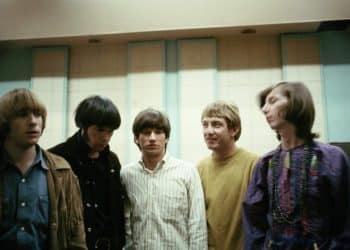Bob Dylan, born Robert Allen Zimmerman on May 24, 1941, is an American singer-songwriter, musician, and poet who has been a major figure in popular music and culture for over six decades. He is widely regarded as one of the greatest songwriters of all time and has had a profound influence on countless musicians across various genres.
Dylan first gained prominence in the early 1960s as part of the folk music revival, with his politically and socially charged songs resonating with audiences during a time of great social change. His early works, including albums like “The Freewheelin’ Bob Dylan” (1963) and “The Times They Are a-Changin'” (1964), established him as a leading voice of his generation.
Throughout his career, Dylan has explored a wide range of musical styles, including folk, rock, blues, country, and gospel. He is known for his distinctive voice, poetic lyrics, and evocative storytelling, which often touch on themes of love, politics, religion, and the human experience.
Some of Dylan’s most famous songs include “Blowin’ in the Wind,” “Like a Rolling Stone,” “The Times They Are a-Changin’,” “Knockin’ on Heaven’s Door,” and “Tangled Up in Blue,” among many others. His songs have been covered by numerous artists and have become anthems for social movements around the world.
In addition to his music career, Dylan is also an accomplished writer and has published several books, including a memoir titled “Chronicles: Volume One” (2004), which offers insights into his life and creative process.
Dylan’s contributions to music and culture have earned him numerous awards and accolades, including multiple Grammy Awards, a Nobel Prize in Literature (awarded in 2016 “for having created new poetic expressions within the great American song tradition”), and induction into the Rock and Roll Hall of Fame. He continues to tour and record music, maintaining his status as a legendary figure in the world of music and songwriting.
1. Like a Rolling Stone
“Like a Rolling Stone” is a landmark song by Bob Dylan, released in 1965 as part of his album “Highway 61 Revisited.” It’s often considered one of the greatest rock songs ever recorded and a defining moment in popular music history.
The song’s lyrics are famous for their cryptic and introspective nature, with Dylan addressing an unidentified person who has fallen from a position of wealth and privilege. The chorus, with its repeated refrain “How does it feel, to be on your own, with no direction home, like a complete unknown, like a rolling stone?” became an anthem of rebellion and disillusionment for a generation.
“Like a Rolling Stone” features a distinctive and innovative musical arrangement, with electric guitar riffs, organ fills, and a driving beat that set it apart from Dylan’s earlier folk recordings. The song’s energetic performance and Dylan’s emotive vocal delivery helped propel it to commercial success and critical acclaim.
The impact of “Like a Rolling Stone” extended far beyond its initial release, influencing countless musicians and songwriters and reshaping the landscape of popular music. It has been covered by numerous artists and featured prominently in films, television shows, and commercials, solidifying its status as an enduring classic of rock music.
2. Blowin’ in the Wind
“Blowin’ in the Wind” is a classic folk song written by Bob Dylan, released in 1963 on his album “The Freewheelin’ Bob Dylan.” The song is known for its simple yet powerful lyrics and its message of peace, freedom, and social justice.
“Blowin’ in the Wind” features a series of rhetorical questions that address issues of war, inequality, and human suffering. The song’s chorus, with its repeated refrain “The answer, my friend, is blowin’ in the wind, the answer is blowin’ in the wind,” suggests that the solutions to these problems are elusive and intangible, much like the wind itself.
Dylan’s haunting vocal delivery and sparse acoustic guitar accompaniment give “Blowin’ in the Wind” a sense of urgency and poignancy. The song’s simple yet profound lyrics struck a chord with audiences during the turbulent 1960s, and it quickly became an anthem of the civil rights and anti-war movements.
“Blowin’ in the Wind” has been covered by numerous artists over the years and has become one of Dylan’s most enduring and beloved songs. Its timeless message of hope and resilience continues to resonate with listeners around the world, cementing its status as a classic of folk and protest music.
3. The Times They Are a-Changin’
“The Times They Are a-Changin'” is a song written and performed by Bob Dylan, released as the title track of his 1964 album. The song became one of Dylan’s most famous and enduring compositions and is regarded as one of the defining anthems of the 1960s counterculture movement.
The lyrics of “The Times They Are a-Changin'” reflect Dylan’s observations on the social and political upheavals of the 1960s, including civil rights struggles, the Vietnam War, and changing cultural norms. The song’s message of change and upheaval resonated with a generation of young people who were questioning authority and seeking to challenge the status quo.
Musically, “The Times They Are a-Changin'” is characterized by its simple, acoustic guitar accompaniment and Dylan’s distinctive vocal delivery. The song’s melody is based on an old Scottish folk song, giving it a timeless and universal quality that has contributed to its enduring popularity.
“The Times They Are a-Changin'” has been covered by numerous artists over the years and has been used in various films, TV shows, and commercials. Its message of social and political change continues to resonate with audiences to this day, cementing its status as one of Bob Dylan’s most iconic and influential songs.
4. Mr. Tambourine Man
“Mr. Tambourine Man” is a song written by Bob Dylan, released as the lead track of his 1965 album “Bringing It All Back Home.” The song is one of Dylan’s most famous compositions and has been covered by numerous artists over the years.
“Mr. Tambourine Man” is characterized by its surreal and poetic lyrics, which evoke dreamlike imagery and a sense of wanderlust. The narrator addresses a mysterious figure, the “Mr. Tambourine Man,” who is described as a kind of mystical figure capable of transporting the narrator to a state of transcendent bliss through his music.
The song’s melody is based on traditional folk music, with Dylan’s acoustic guitar accompaniment providing a simple and understated backdrop for the lyrics. Dylan’s vocal delivery is emotive and expressive, capturing the sense of longing and yearning conveyed in the song’s lyrics.
“Mr. Tambourine Man” became an instant classic upon its release and has since been regarded as one of Dylan’s greatest songs. Its timeless appeal and universal themes of escapism and self-discovery have ensured its enduring popularity, making it a beloved favorite among fans of folk and rock music alike.
5. All Along the Watchtower
“All Along the Watchtower” is a song written by Bob Dylan, first released on his album “John Wesley Harding” in 1967. It is known for its enigmatic lyrics and haunting melody.
The song’s lyrics are cryptic and open to interpretation, featuring a conversation between two characters, the joker and the thief, as they discuss existential themes and the passage of time. The imagery of watchtowers, princes, and wildcats adds to the song’s mysterious atmosphere.
Although Dylan’s original version of “All Along the Watchtower” received critical acclaim, it was the cover by Jimi Hendrix released in 1968 that became the most famous rendition of the song. Hendrix’s electrifying guitar work and soulful vocals transformed the song into a psychedelic rock masterpiece.
Hendrix’s version of “All Along the Watchtower” is characterized by its dynamic arrangement, featuring his iconic guitar riffs and improvisational style. The song’s intense energy and Hendrix’s virtuosic performance have made it one of his signature songs and a highlight of his live performances.
Over the years, “All Along the Watchtower” has been covered by numerous artists across various genres, further solidifying its status as a classic of popular music. Its timeless appeal and enduring legacy continue to captivate audiences and inspire musicians to this day.
6. Highway 61 Revisited
“Highway 61 Revisited” is the title track of Bob Dylan’s 1965 album of the same name. It’s often considered one of Dylan’s greatest achievements and a landmark in the history of rock music.
The song’s lyrics are dense with imagery and allusions, painting a vivid picture of American life and culture. The title refers to Highway 61, a major highway that runs through the American Midwest, connecting Dylan’s hometown of Duluth, Minnesota, with the Mississippi Delta region, known for its rich musical heritage.
“Highway 61 Revisited” is characterized by its driving rhythm, bluesy guitar riffs, and Dylan’s distinctive vocal delivery. The song’s electrifying energy and cryptic lyrics marked a departure from Dylan’s earlier folk recordings and helped usher in a new era of rock music.
The album “Highway 61 Revisited” is widely regarded as one of Dylan’s masterpieces and a seminal work in the development of rock music. It features several other iconic songs, including “Like a Rolling Stone” and “Ballad of a Thin Man,” which further cemented Dylan’s status as one of the greatest songwriters of all time.
“Highway 61 Revisited” has been covered by numerous artists and has become a classic of the rock genre. Its enduring popularity and influence continue to resonate with listeners and inspire generations of musicians.
7. Subterranean Homesick Blues
“Subterranean Homesick Blues” is a song by Bob Dylan, released as the opening track of his 1965 album “Bringing It All Back Home.” The song is notable for its rapid-fire delivery, surreal lyrics, and its influence on the development of both folk and rock music.
“Subterranean Homesick Blues” is characterized by its fast-paced, stream-of-consciousness lyrics, which touch on a wide range of social and political themes. The song’s title is a play on words, referencing both the underground counterculture movement of the 1960s and the blues music that influenced Dylan’s style.
The song’s iconic music video, directed by D.A. Pennebaker, features Dylan standing in an alleyway holding cue cards with the song’s lyrics written on them. As Dylan flips through the cue cards, he is joined by various people who interact with him in playful and surreal ways, creating a visual representation of the song’s rapid-fire delivery and eclectic imagery.
“Subterranean Homesick Blues” is regarded as one of Dylan’s most influential and innovative songs, paving the way for the development of both folk-rock and rap music. Its rapid-fire delivery and socially conscious lyrics have made it a favorite among fans of Dylan and a classic of the 1960s counterculture movement.
8. Knockin’ on Heaven’s Door
“Knockin’ on Heaven’s Door” is a song written and performed by Bob Dylan, released in 1973 on the soundtrack album for the film “Pat Garrett and Billy the Kid,” in which Dylan also acted. The song has since become one of Dylan’s most famous and enduring compositions.
“Knockin’ on Heaven’s Door” is a poignant and reflective song that deals with themes of mortality, redemption, and acceptance. The lyrics depict a dying lawman who reflects on his life and impending death, expressing a desire for peace and salvation as he approaches the end.
The song’s chorus, with its repeated refrain “Knock, knock, knockin’ on heaven’s door,” captures the protagonist’s longing for transcendence and release from earthly suffering. The simple yet powerful melody and Dylan’s emotive vocal delivery contribute to the song’s emotional impact.
“Knockin’ on Heaven’s Door” has been covered by numerous artists over the years and has become a classic of the rock and folk genres. Its universal themes and timeless appeal continue to resonate with listeners of all ages, cementing its status as one of Dylan’s most beloved and enduring songs.
9. Tangled Up in Blue
“Tangled Up in Blue” is a song by Bob Dylan, released in 1975 on his album “Blood on the Tracks.” It’s often considered one of Dylan’s greatest compositions and a highlight of his extensive catalog.
“Tangled Up in Blue” is a narrative song that tells the story of a complex relationship, featuring multiple characters and shifting perspectives. The lyrics are characterized by their vivid imagery, poetic language, and introspective themes of love, loss, and longing.
The song’s title refers to the feeling of being entangled or confused in the complexities of life and relationships. The protagonist reflects on past experiences and memories, exploring themes of change, redemption, and the search for meaning.
Musically, “Tangled Up in Blue” features a fingerpicked guitar accompaniment and Dylan’s distinctive vocal delivery. The song’s arrangement is sparse yet evocative, allowing the lyrics to take center stage and resonate with listeners on a deep emotional level.
“Tangled Up in Blue” has been covered by numerous artists and has become a staple of Dylan’s live performances. Its timeless appeal and universal themes continue to captivate audiences and inspire generations of musicians, cementing its status as one of Dylan’s most enduring and beloved songs.
10. Forever Young
“Forever Young” is a song by Bob Dylan, released in 1974 on his album “Planet Waves.” It’s a heartfelt and uplifting anthem that celebrates the spirit of youth and offers words of wisdom and encouragement.
“Forever Young” features tender and hopeful lyrics, expressing a desire for a life filled with joy, adventure, and love. The song’s chorus, with its repeated refrain “May you stay forever young,” serves as a blessing and a wish for eternal happiness and vitality.
The song’s universal message and timeless appeal have made it a favorite for graduations, weddings, and other milestone events. Its lyrics resonate with listeners of all ages, offering comfort and inspiration in times of uncertainty and change.
Musically, “Forever Young” is characterized by its gentle acoustic guitar accompaniment and Dylan’s emotive vocal delivery. The song’s simple yet profound melody enhances its emotional impact, creating a sense of warmth and nostalgia.
“Forever Young” has been covered by numerous artists over the years and has become one of Dylan’s most beloved and enduring songs. Its enduring popularity and universal message continue to resonate with listeners around the world, making it a classic of the folk and rock genres.









